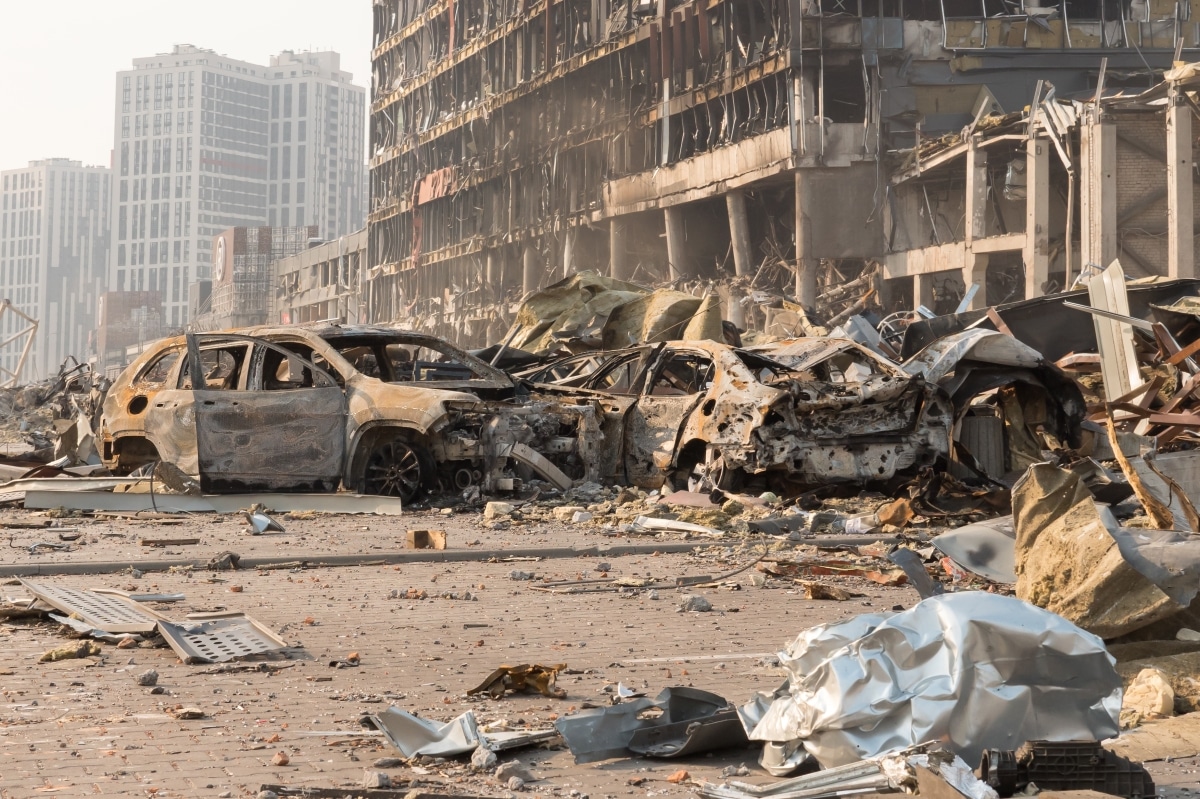Despite Russian President Vladimir Putin’s public statement that Russian troops should just blockade the Azovstal steel plant in the savaged city of Mariupol, Russian soldiers, backed by air and artillery strikes attempted to storm the plant on Sunday.
The Russians have been trying to take the strategic port city on the Sea of Azov since the war began more than two months ago. Not only would the taking of the city deny Ukraine an important port for their economy, it would provide a land bridge between Crimea that Russia annexed in 2014 in another invasion of Ukraine, with the separatist-held areas in the Donbas. With the city taken, it would free up much of the Russian assault troops that would be used in the offensive in eastern Ukraine.
The fighting in Mariupol has been intense, but the Russians have virtually taken the entire city, leaving only an enclave of 2,500 troops and 1,000 civilians in the sprawling steel plant that takes up about 4 square miles.
Ukraine’s armed forces wrote on its Facebook page that Russian forces were performing “offensive operations” in the Azovstal plant area, as well as conducting air strikes on civilian infrastructure. The commander of Ukraine’s 36th Marine brigade, Serhiy Volyna, said in an interview that Russian airstrikes and artillery were hitting the area with intensity.
“We are taking casualties, the situation is critical… we have very many wounded men, (some) are dying, it’s a difficult (situation) with guns, ammunition, food, medicines… the situation is rapidly worsening,” Volyna said.
On Thursday, Russian Defense Minister Sergei Shoigu reported to Putin during a carefully orchestrated video that was broadcast on Russian television, that the entire city of Mariupol, with the exception of the Azovstal plant, had been “liberated” by the Russians. At the time, Putin ordered him not to send Russian troops into the plant but instead to block off the facility, an apparent attempt to starve out the Ukrainians and force them to surrender.
Characterizing an assault as “impractical” and called instead for Russian troops to blockade the area “so that a fly can’t get through”. He used this television moment to portray himself as a caring leader who was trying to protect Russian and Ukrainian lives.
“This is the case when we have to think, that is, we always have to think, and in this case even more so, about preserving the lives and health of our soldiers and officers,” Putin said. “There is no need to climb into these catacombs and crawl underground through these industrial facilities.”
The Ukrainians, however, believe that Putin ordered this because the Russians couldn’t take the steel works because of the strength of the Ukrainian positions as well as the fact that they had already begun shifting forces to the east to help with the offensive in the Donbas.
Oleksiy Arestovych, Ukraine’s presidential adviser said, “They physically cannot take Azovstal, they have understood this, they have taken huge losses there. Our defenders continue to hold it. Retired British Rear Admiral Chris Parry spoke to the Associated Press and said, “The Russian agenda now is not to capture these really difficult places where the Ukrainians can hold out in the urban centers, but to try and capture territory and also to encircle the Ukrainian forces and declare a huge victory,” referring to
the belief that Russian commanders are under pressure to secure a large victory before the annual May 9th parade in Moscow. That signifies the Russian victory in the “Great Patriotic War” over Nazi Germany which was the end of World War II in Europe.
The situation for the citizens of Mariupol is desperate. The city had a pre-war population of 430,000 and is now down to 100,000, but those who remained have little food, water and no electricity. More than 20,000 civilians are believed to have been killed in the fighting. Satellite images showed what are believed to be mass graves in the Russian-held areas.
Meanwhile in the Donbas, Ukrainian forces claim that in the past 24 hours, their military forces repelled eight Russian attacks in the two regions, destroying nine tanks, 18 armored units and 13 vehicles, a tanker and three artillery systems, Ukraine’s General Staff said.
Authored by Steve Balestrieri






